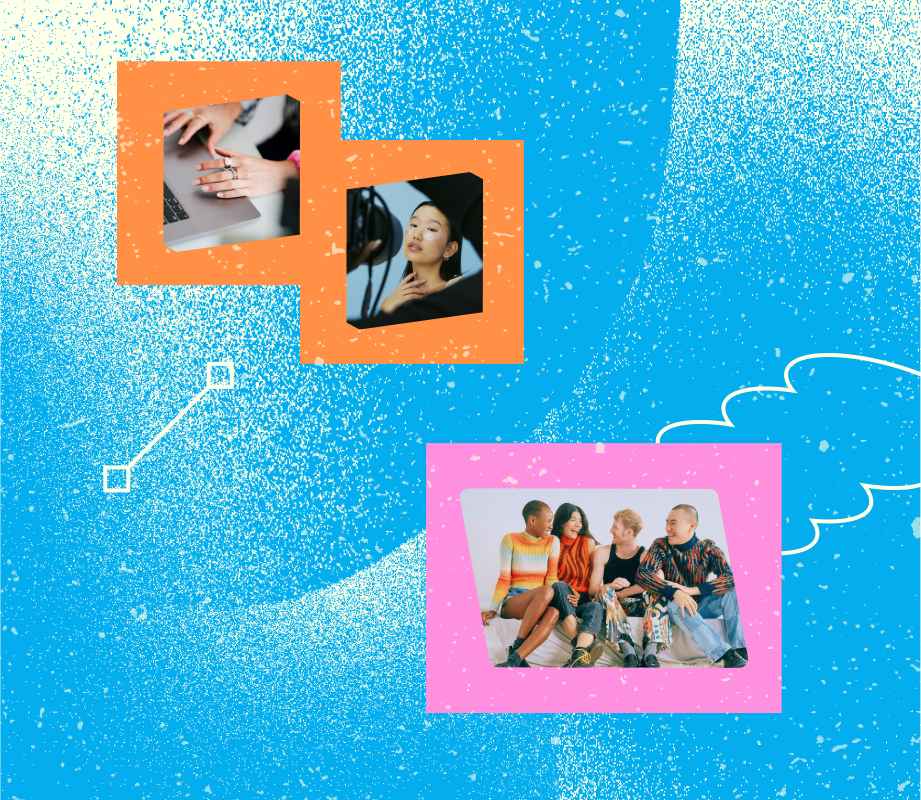Influencer marketing is now a $21B industry — meaning there are countless social media influencers for brands to work with.
But how do you choose the right influencers for your campaign? We've got you covered.
From follower size to industry, we're breaking down 14 categories of social media influencers to help you make a decision.
Table of Contents
What Is a Social Media Influencer?
An influencer is a social media personality who influences their audience to purchase the products or services they promote.
Their social feeds will have a good blend of personal branding, content creation, and promotion.
What’s the Difference Between Influencers and Content Creators?
While the terms “influencer” and “content creator” are used interchangeably, there is a difference between the two.
Essentially, a content creator is anyone who creates digital content, whereas an influencer creates content to build an audience and land brand partnerships.
FYI: Later Influence™ is a leading influencer marketing platform, trusted by brands to simplify day-to-day management, get insightful reporting, and more. Schedule a call today.
4 Types of Social Media Influencers — by Follower Count
Influencers are commonly categorized into four different tiers based on their social media follower count.
Here are the benefits to working with each type:
#1: Nano Social Media Influencers
What Is a Nano Influencer?
A Nano influencer is someone who has 0-10K followers.
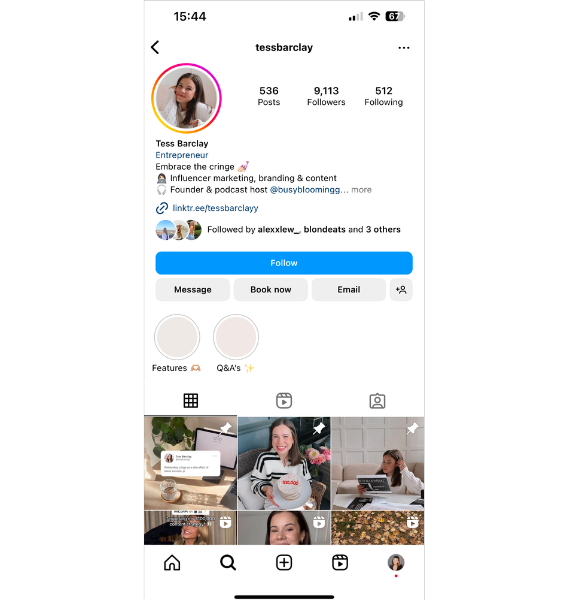
When To Work With Nano Influencers?
Nano influencers are best for small to medium-sized businesses with limited marketing budgets.
Benefits To Working With Nano Influencers
More cost-effective than Mid or Macro social media influencers
Have an engaged following — typically have higher engagement rates than Mid or Macro influencers
Recommendations seem more trustworthy and personalized
Often focus on one specific niche
#2: Micro Social Media Influencers
What Is a Micro Influencer?
A Micro influencer is someone who has 10K-100K followers.
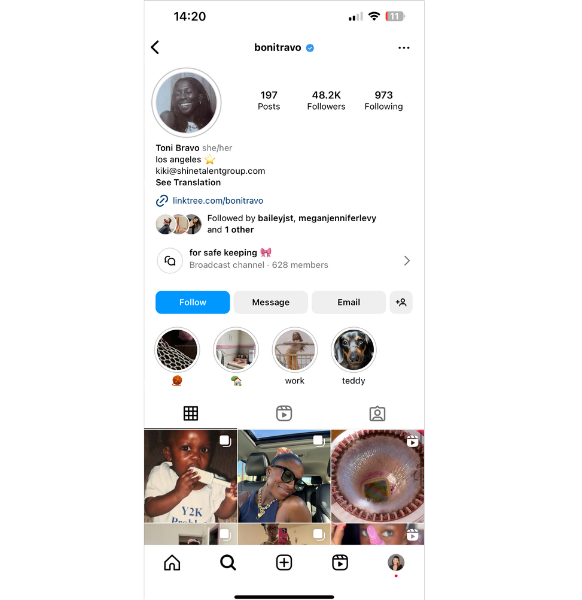
When To Work With Micro Influencers?
Any brand or business can benefit from working with Micro influencers — especially if you want to reach new engaged audiences.
Benefits To Working With Micro Influencers
Cost-effective
Often have authority in their niche
Have a deep understanding of their audience and its needs
Have a clear understanding when it comes to campaign briefs and expectations
Great for brand awareness campaigns
ICYMI: Later's influencer marketing platform is trusted by marketers and enterprise brands to source and manage Micro influencer campaigns. Learn more.
#3: Mid Social Media Influencers
What Is a Mid Influencer?
A Mid influencer is someone who has between 100K-500K followers.
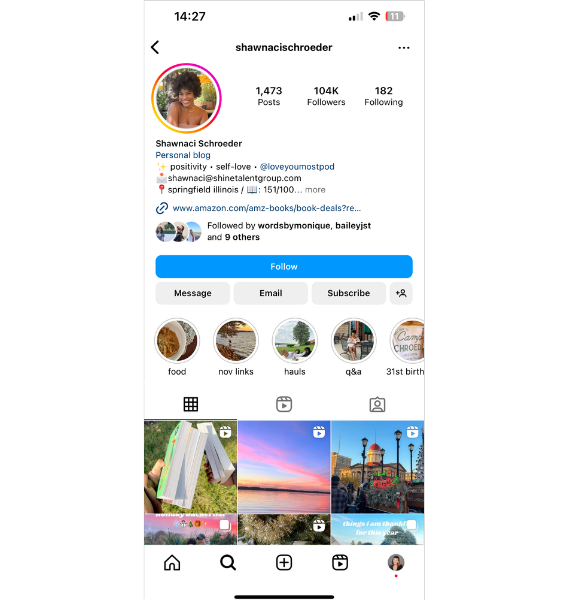
When To Work With Mid Influencers?
Mid influencers are ideal influencer marketing partners for brands and businesses looking to reach large audiences, as they have the potential to generate significant exposure and conversions for their products or services.
Benefits To Working With Mid Influencers
Often have engaged audiences on more than one social platform
Typically have a website, email list, or podcast to leverage
Seen as a trusted, authoritative voice within their community
Share high quality content and understand what works well for their audience
Good option for driving clicks and conversions
#4: Macro Social Media Influencers
What Is a Macro Influencer?
A Macro influencer is someone with 500K+ followers.
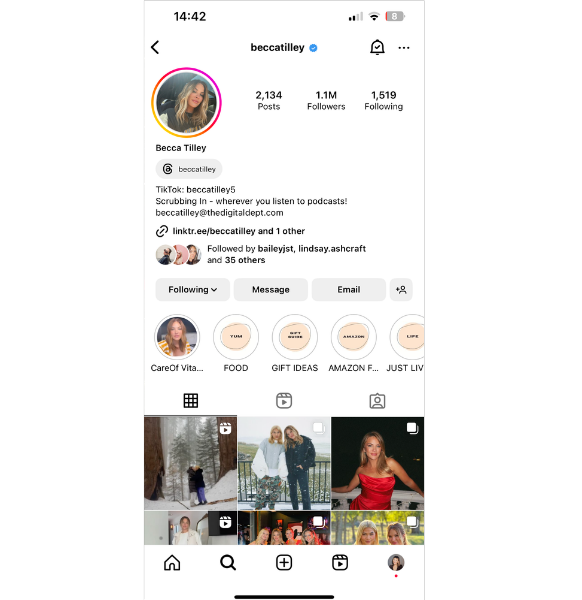
When To Work With Macro Influencers?
The goal of working with Macro influencers is typically tied to both awareness and sales.
Macro influencers are best used for campaigns with big budgets. Unlike working with Nano or Micro influencers, you’ll likely only work with one or two Macro influencers as opposed to a handful or more.
Benefits To Working With Macro Influencers
Opportunity to reach large audiences
Great for major product launches or seasonal campaigns like Black Friday, Boxing Day, etc.
Typically have well-established credibility
Macro influencers often create professional high-quality content
10 Types of Social Media Influencers — by Industry and Niche
Beyond follower size, influencers can also be categorized by industry and niche.
Here are the most popular types of influencers you’ll most likely work with:
Food Influencers
Health and Wellness Influencers
Fashion Influencers
Lifestyle Influencers
Memes and Pop-culture Coverage Influencers
Travel Influencers
Family Influencers
Gaming Influencers
Animal Influencers
Beauty Influencers
#1: Food Influencers
“Phone eats first,” is especially true for foodie influencers.
These influencers share everything from their best game-day recipes to holiday favorites to grocery budgeting tips.
And there are so many creative ways to work with them.
Take Folgers Coffee’s recent partnership with Meredith Hayden (aka @wishbonekitchen) for example:
As Meredith's content typically includes breakfast recipes, Folgers is a natural (and on-brand) integration on her feed.
#2: Health and Wellness Influencers
The health and wellness industry is booming — especially on social media.
In fact, 47.6% of people use social media as their main source of health information.
Health and wellness influencers span a number of topics including, nutrition, fitness, exercise, sleep, stress, mental health, and social connections.
#3: Fashion Influencers
Fashion influencers create content focused on all things, you guessed it, fashion.
There are fashion influencers who share different outfits every day, those who share the latest fashion trends, and others who share realistic hauls.
Fashion influencers span a wide range of fashion-centric topics but one thing is for sure: their followers look to them for inspiration, relatability, tips, and the like.
Streamline creator discovery and management when you sign up for Later Influence — schedule a call to learn more.
#4: Lifestyle Influencers
Lifestyle influencers make up a large chunk of the influencers you see online.
Because they aren't pigeon holed to one type of niche, their content typically documents their daily lives — from a weekend trip to their morning skincare routine.
Chrissy Rutherford is a perfect example of a lifestyle influencer. She talks about fashion, living abroad, mental health, travel, and her day-to-day.
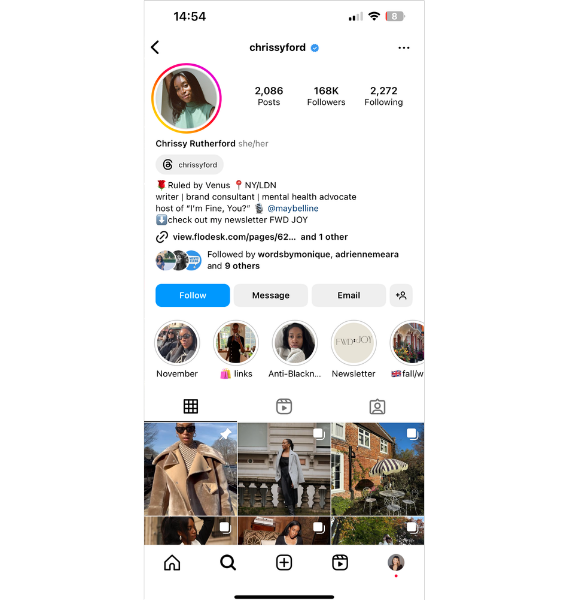
Lifestyle influencers are versatile, making them a great fit for most brand partnerships.
#5: Memes and Pop-culture Coverage Influencers
While meme and pop culture influencers are not new, they’ve taken off in recent years.
These types of influencers focus on humor and entertainment with a TV, movie, and celebrity lens.
Influencers like Alexandra Nikolajev (@lexniko) and Amanda Hirsch (@notskinnybutnotfat) often partner with lifestyle and entertainment brands.
Because these influencers typically attract a younger demographic, they’re great for brands who are looking to reach a Gen Z and Millennial audience.
#6: Travel Influencers
Travel influencers create high-quality content regarding all things travel.
There are travel influencers who highlight their favorite trips and destinations, and others who share their favorite travel strategies, deals, and products.
#7: Family Influencers
Family influencers are influencers who focus on family life, parenthood, and family dynamics.
Mommy influencers are a sub-category — which is a massive influencer niche on its own.
Many family influencers diversify their content across various platforms, whether it's vlogging on YouTube or posting on Instagram and TikTok.
They share a wide range of content including educational materials, parenting experiences, and their favorite brands or toys.
#8: Gaming Influencers
Gaming influencers are influencers who are dedicated to video game content — often posting on Twitch, YouTube, and TikTok.
Their followers can typically expect live-streams, game reviews, their thoughts about upcoming releases, and more.
In fact, 89.5% of video game sales happen in the digital world, making video game influencers extremely lucrative.
Collaborating with gaming influencers can also lead to creative campaigns audiences love. Later Influence and Chobani worked with creators on Twitch to promote an exclusive game that got 7 million total impressions. See how they did it here.
#9: Animal Influencers
Arguably the cutest influencers of them all: animal influencers.
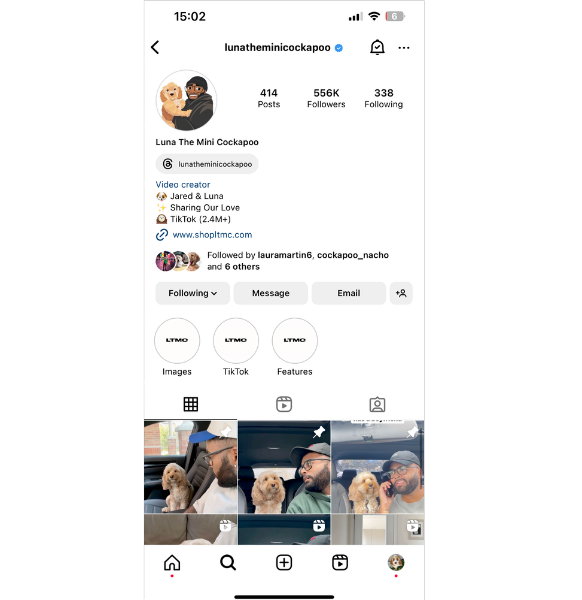
Animal influencers span from owners posting on behalf of their pets to influencers sharing the ins and outs of their furry companions’ lives.
Animal influencers share everything from daily vlogs, product reviews, training tips, grooming, and pet food.
#10: Beauty Influencers
The beauty industry is one to watch — it’s predicted to grow to $716.3B by 2025.
Beauty influencers create and share content related to makeup, skincare, haircare, and other beauty-related topics.
These influencers are seen as experts in the space and often have the trust and confidence from their audience.
As a brand, onboarding beauty influencers is the best way to showcase your products in a true, authentic way. Audiences love to see how products work and are applied in real-life situations.
How To Find the Right Type of Social Media Influencer for Your Brand in 2024
The type of influencers you work with will vary depending on your goals, budget and industry.
If you have a limited influencer marketing budget, you can start by monitoring influencers who are already talking about your brand (or niche) and reaching out to them directly.
If you have a sizeable budget, you can use an influencer marketing platform, like Later Influence, that does all the heavy lifting for you.
Using Later's Influencer Search Tool, you can find countless influencers from a range of niches and industries. You can even filter by age, location, audience insights, and more.
Ready to get started? Schedule a call to learn how you can manage your influencer marketing campaigns more effectively, today.



